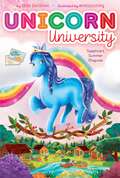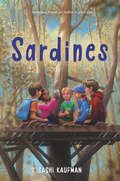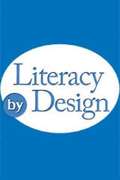- Table View
- List View
Santillana Spotlight on English 2
by Santillana StaffSantillana Spotlight on English: Academic English for Success in Content and Literacy (Student Book 2)
Santillana Spotlight on English, [Level] 2, Student Book (Spotlight On English Ser.)
by Vista Higher LearningNIMAC-sourced textbook
Santoor class 3 - NCERT - 23
by National Council of Educational Research and Training"Santoor" is an engaging and educational children's book designed to align with the National Syllabus and Teaching Learning Material Committee (NSTC) guidelines. It features a variety of thematic units and chapters that blend learning with fun, aiming to nurture young minds through stories, activities, and visual stimuli. Each unit is complemented by interactive picture reading sessions, hands-on activities, and engaging stories that not only entertain but also educate, making "Santoor" a comprehensive and enjoyable learning resource for young children.
Sapphire's Summer Disguise (Unicorn University #6)
by Daisy SunshineSapphire attends a summer camp for young foals in the sixth book of this sparkly chapter book series that follows the trials and triumphs of young foals attending Unicorn University—perfect for those who love magic, happiness, and My Little Pony!Sapphire is ready for a summer full of fun at Camp Explore, which is in the Great Forest of Sunshine Springs, far away from her ocean home. The famous Amelia Hoofheart, Sapphire&’s role model, was a camper at Camp Explore long ago, and Sapphire dreams of following in her hoofprints. Sapphire will miss her home and friends, but Comet, Shamrock, and Twilight promised to send her postcards, and Sapphire is sure she&’ll make new friends at camp. It seems like things are off to a good start when camp kicks off with some friendly pranks, but then Sapphire realizes the unicorns aren&’t pranking her at all. They really think she&’s Princess Nova, princess of the Five Kingdoms! But a princess wouldn&’t be attending a summer camp in the middle of the forest…right?
Sara's Rocket Ride (Fountas & Pinnell Classroom, Guided Reading)
by Roger Roth Catherine BestNIMAC-sourced textbook
Sarangi class 1 - NCERT - 23: सारंगी १ली कक्षा - एनसीईआरटी - २३
by Rashtriy Shaikshik Anusandhan Aur Prashikshan Parishadसारंगी भाग 1 किताब का निर्माण करते हुए मुख्य रूप से राष्ट्रीय शिक्षा नीति 2020 के अनुसार भाषा राष्ट्रीय विकास को बढ़ावा देने और न्यायप्रिय समाज को विकसित करने में महत्वपूर्ण भूमिका निभाती है। इस नीति में बच्चों की शिक्षा में भाषा और साक्षरता के विकास को बहुत महत्व दिया गया है। यह माना जाता है कि भाषा और साक्षरता की ठोस नींव बच्चों के लिए अन्य विषयों को सीखने में बहुत सहायक होती है। राष्ट्रीय शिक्षा नीति 2020 में बुनियादी स्तर (फाउंडेशनल स्टेज) पर बच्चों में भाषा के विकास के साथ-साथ सतत सीखने की कला, समस्या-समाधान, तार्किक और रचनात्मक सोच के विकास पर भी बहुत बल दिया गया है। इस स्तर पर भाषा के साथ-साथ अन्य विषयों और गतिविधियों में भारतीय परंपरा, सांस्कृतिक मूल्य, चरित्र निर्माण, नैतिकता, करुणा और पर्यावरण के प्रति संवेदनशीलता को समेकित रूप में सम्मिलित करने की भी अनुशंसा की गई है।
Sarangi class 2 - NCERT - 23: सारंगी २री कक्षा - एनसीईआरटी - २३
by Rashtriy Shaikshik Anusandhan Aur Prashikshan Parishadसारंगी भाग 2 किताब का निर्माण करते हुए मुख्य रूप से राष्ट्रीय शिक्षा नीति 2020 के दिशा-निर्देशों को ध्यान में रखा गया है। राष्ट्रीय शिक्षा नीति 2020 के आलोक में विकसित बुनियादी स्तर की पाठ्यचर्या की अनुशंसाओं को भी इस पाठ्यपुस्तक में समाहित किया गया है। राष्ट्रीय शिक्षा नीति 2020 की अनुशंसाओं के अनुसार यह पाठ्यपुस्तक राष्ट्रीय विकास को बढ़ावा देने तथा न्यायपूर्ण समाज को विकसित करने में महत्वपूर्ण भूमिका निभाएगी। इस नीति में बच्चों की शिक्षा में भाषा और साक्षरता विकास को बहुत महत्व दिया गया है। भाषा और साक्षरता की ठोस नींव अन्य विषयों को भी दक्षतापूर्वक सीखने में सहायक होती है। राष्ट्रीय शिक्षा नीति 2020 बुनियादी स्तर (फाउंडेशनल स्टेज) पर बच्चों में भाषा के विकास के साथ-साथ सतत सीखने की कला, समस्या समाधान, तार्किक और रचनात्मक चिंतन के विकास पर भी बहुत बल देती है। इस स्तर पर भाषा के साथ-साथ अन्य विषयों और गतिविधियों में भारतीय परंपरा, सांस्कृतिक मूल्य, राष्ट्रप्रेम, चरित्र-निर्माण, नैतिकता, करुणा, जेंडर संवेदनशीलता और पर्यावरण के प्रति संवेदनशीलता को भी समेकित रूप में सम्मिलित करने की अनुशंसा करती है।
Saraí salva la música (Sarai)
by Monica Brown Sarai GonzalezThe third book in the Sarai Gonzalez illustrated chapter book series inspired by the life of eleven-year-old viral video sensation and social activist Sarai Gonzalez.The Spanish edition of Sarai Saves the Music!They're cutting funding at Sarai's school and her band program is the first to go. That is totally not okay with Sarai. She decides to organize a benefit concert to raise money! When she and her bandmates promote the concert on their video channel, it catches the attention of Sarai's favorite singer, Sparkles Sanchez! Can Sarai save the music?Estan recortando fondos en la escuela de Sarai y la banda de musica dejara de existir. Por supuesto, Sarai no esta de acuerdo con esto. Decide organizar un concierto para recaudar fondos y, para promoverlo, ella y sus companeros crean un video que ponen en Internet. ¡El video atrae la atencion de Sparkles Sanchez! ¿Podra Sarai salvar el programa de musica de la escuela?
Saraí y la Feria Alrededor del Mundo (Sarai)
by Monica Brown Sarai GonzalezThe Spanish edition of Sarai Around the World!Los estudiantes estan cansados de comer espaguetis con albondigas los lunes en la cafeteria. La administracion de la escuela dice que pueden ayudar a crear un nuevo menu. Asi que todos preparan puestos con las especialidades de su familia para ver cuales recetas lograran formar parte del menu escolar.The students are sick and tired of Spaghetti-and-Meatball Mondays in the cafeteria. The administration says they can help create a new menu, so students throughout the school make booths with their family's specialties for Around-the-World Day. It's a head-to-head battle between Sarai's Peruvian chicken and Valeria's tamales. Who will win the big cook-off and get their grandparents' recipes on the cafeteria menu?
Sardines
by Sashi Kaufman"Full of honesty, humor, and hope. You will fall in love with these characters and root for them each step of the way." — Ann Braden, author of The Benefits of Being an Octopus“At once tender and funny, honest and smart. The characters will squeeze into your heart.” — Megan Frazer Blakemore, award-winning author of The Water Castle"Strong. A thoughtful and compassionate story of friends and family.” — Kirkus Reviews"Fresh and relatable." — Publishers Weekly
Sarkas: सर्कस
by Sanjeevप्रतिपल कुछ टूट रहा है, मगर उसी तरह कुछ जुड़ भी रहा है क्या? अगर कुछ जुड़ रहा हो तो वह क्या और कितना है?
Sarvajanik Ayavyay 1 Paper 4 TYBA Fifth Semester - SPPU: सार्वजनिक आयव्यय १ पेपर ४ टी.वाय.बी.ए. सेमिस्टर ५ - सावित्रीबाई फुले पुणे यूनिवर्सिटी
by Prof. Dr. D.G. Ushir Prof. Dr. S.R. Jawale Dr D. B. Pawar Dr S. B. Syyadतृतीय वर्ष कला शाखेसाठी अर्थशास्त्र स्पेशल पेपर-4: सार्वजनिक आयव्यय हा विषय निर्धारित करण्यात आला आहे. वास्तविक पाहता हा विषय यापूर्वी विशेष स्तरावर होताच. अभ्यास मंडळातील माननीय सदस्यांनी बदलत्या परिस्थितीनुसार नवीन अभ्यासक्रमांमध्ये काही जास्तीच्या बाबी समाविष्ट केल्या आहेत. नवीन सिद्धान्त आणि घटक यांचे सविस्तरपणे विश्लेषण या पुस्तकामध्ये मांडण्यात आलेले आहे. नेहमीप्रमाणे पुस्तकाची भाषा अत्यंत ओघवती आणि विद्यार्थ्यांना सहजपणे कळेल अशी ठेवण्यात आलेली आहे. आम्हाला खात्री आहे की पूर्वीप्रमाणेच या पुस्तकाचेदेखील विद्यार्थी आणि प्राध्यापक वर्गांकडून स्वागत होईल. सदर पुस्तक सावित्रीबाई फुले पुणे विद्यापीठाच्या अभ्यासक्रमानुसार लिहिलेले असले तरी महाराष्ट्रातील सर्व विद्यापीठांच्या अर्थशास्त्र विषयाचा अभ्यास करणाऱ्या विद्यार्थ्यांसाठी त्याचप्रमाणे स्पर्धा परीक्षांचा अभ्यास करणाऱ्या विद्यार्थ्यांसाठी हे पुस्तक उपयुक्त आहे.
Sarvajanik Ayavyay 2 Paper 4 TYBA Sixth Semester - SPPU: सार्वजनिक आयव्यय 2 पेपर ४ टी.वाय.बी.ए. सेमिस्टर ६ - सावित्रीबाई फुले पुणे यूनिवर्सिटी
by Prof. Dr. D. G. Late Prof. Dr. S. B. Syed Prof. Dr. S. R. Javale Prof. S. P. Adhavतृतीय वर्ष कला शाखा सत्र 5 व 6 नेमलेल्या अर्थशास्त्र विशेष पेपर-3 साठी सार्वजनिक आयव्यय हा विषय निर्धारित करण्यात आला आहे. वास्तविक पाहता हा विषय यापूर्वी विशेष स्तरावर होताच परंतु नवीन अभ्यासक्रमामध्ये विद्यमान परिस्थिती लक्षात घेऊन काही जास्तीचे मुद्दे समाविष्ट करण्यात आले आहेत. सत्र 6 साठी नेमलेल्या अभासक्रमानुसार आम्ही सार्वजनिक आयव्ययाचे पुस्तक सर्व दृष्टिकोनातून पूर्ण केले आहे. अभ्यासक्रमामध्ये आलेले नवीन सिद्धान्त आणि घटक यांचे सविस्तरपणे विश्लेषण या पुस्तकामध्ये मांडण्यात आलेले आहे. नेहमीप्रमाणे पुस्तकाची भाषा अत्यंत ओघवती आणि विद्यार्थ्यांना सहजपणे कळेल अशी ठेवण्यात आलेली आहे. सदर पुस्तक सावित्रीबाई फुले पुणे विद्यापीठाच्या अभ्यासक्रमानुसार लिहिलेले असले तरी महाराष्ट्रातील सर्व विद्यापीठांच्या अर्थशास्त्र विषयाचा अभ्यास करणाऱ्या विद्यार्थ्यांसाठी त्याचप्रमाणे स्पर्धा परीक्षांचा अभ्यास करणाऱ्या विद्यार्थ्यांसाठी हे पुस्तक उपयुक्त आहे.
Sarvajanik Ayavyaya TY BA Pune University
by G. J. Lomate R. M. Chintamani D. S. Kadam R. K. DatirSarvajanik Ayavyaya text book for Third year from The Pune Universtity in Marathi.
Sarvangi Shikshan class 7 - GSTB: સર્વાગી શિક્ષણ (શારીરિક શિક્ષણ, સંગીત અને ચિત્રકલા) ધોરણ 7 - જીએસટીબી
by Gstbધોરણ 7 સર્વાગી શિક્ષણ (શારીરિક શિક્ષણ, સંગીત અને ચિત્રકલા) વિષયનું પાઠ્યપુસ્તક છે જેમાં 38 પ્રકરણ આપેલ છે.
Sarvangi Shikshan class 8 - GSTB: સર્વાંગી શિક્ષણ ધોરણ ૮ - GSTB
by Gstbપ્રસ્તુત પાઠ્યપુસ્તક ધોરણ ૮ નું સર્વાંગી શિક્ષણ વિષયનું છે જે ત્રણ વિભાગ માં છે શારીરિક શિક્ષણ, સંગીત, ચિત્રકલા જેમાં કુલ ૪૨ પ્રકરણ છે.
Saryu Hindi Saahity class 12 - RBSE Board: सरयू हिन्दी साहित्य कक्षा 12 - आरबीएसई बोर्ड
by Madhyamik Shiksha Board Rajasthan Ajmerसरयू इस पाठ्यपुस्तक मे सामाजिक, नैतिक, बौद्धिक स्तर के अनुरूप साहित्य रचनाओं के माध्यम से उनके हिंदी भाषा ज्ञान, अर्थ ग्रहण एवं अभिव्यक्ति क्षमता के उत्कर्ष के सार्थक उद्देश्य तथा गद्य खण्ड में विभिन्न कालखंडों के हिंदी के प्रतिनिधि एवं स्तरीय गद्यकारों की सुबोध, रुचिकर एवं प्रेरणास्पद रचनाएँ संकलित हैं। पद्य खंड में हिंदी काव्य के कथ्यगत एवं अनुभूतिपरक परि प्रतिनिधि कवियों की सरस, सुबोध, प्रेरक एवं जीवन के विविध पहलुओं की अर्थ गंभीर अभिव्यंजना करने वाली विशिष्ट कविताओं को संगृहीत किया गया है।
Sasha's Lucky Walk: A Folktale from India (Fountas & Pinnell Classroom)
by John Perritano Durga BernhardA Gift for Sasha Sasha goes for a walk and meets a boy playing with two sticks. When Sasha accepts the sticks as a gift, she begins a journey that teaches her new lessons. NIMAC-sourced textbook
Sathottari Marathi Katha FYBA New NEP Syllabus - RTMNU: साठोत्तरी मराठी कथा एफ.वाय.बी.ए. नवीन एन.इ.पी. अभ्यासक्रम - राष्ट्रसंत तुकडोजी महाराज नागपूर विद्यापीठ
by Dr Dattatraya Watmode Dr Venkatesh Potphode Dr Sopandev Piseसाठोत्तरी मराठी कथा हा संग्रह १९६० ते २००० या कालखंडातील मराठी कथांचा प्रतिनिधिक दस्तऐवज आहे. या काळातील कथा सामाजिक, सांस्कृतिक, प्रादेशिक आणि भाषिक विविधतेचे सशक्त दर्शन घडवतात. पारंपरिक चौकटी मोडून नव्या जीवनमूल्यांची मांडणी करणाऱ्या या कथांमध्ये ग्रामीण, नागर, श्रमिक, दलित, आणि स्त्रियांचे वास्तव चित्रित होते. ह्या कथांतून माणसाच्या दु:खद संघर्षांतून उगम पावलेली करुणा, तिरस्कार, विषमता, आणि विद्रोहाचे स्वर सामोरे येतात. हरिभाऊंच्या स्फुट कथांपासून सुरू झालेली ही वाटचाल द. मा. मिरासदार, श्री. म. माटे, मधु मंगेश कर्णिक, आनंद यादव यांच्यासारख्या विविध शैलीतील कथाकारांनी पुढे नेली. कुणी विनोदी ढंगात तर कुणी वास्तववादी पद्धतीने जीवनाचे विवेचन केले. काही कथा ग्रामीण जीवनातील कष्ट, दारिद्र्य, मातृत्व व ममता यांची झलक दाखवतात, तर काहींमध्ये स्त्री-विषयक जाणीवा, सामाजिक विषमता व अंतर्मुखता प्रकर्षाने दिसते. आधुनिक मराठी कथेला नवा चेहरा देणारा हा संग्रह अभ्यासक, विद्यार्थी व रसिकांसाठी अमूल्य ठरतो. साठोत्तरी मराठी कथा म्हणजे काळाच्या प्रवाहातील मानवी संवेदना, मूल्यप्रत्यय व संघर्ष यांचे प्रतिबिंब होय.
Sathottari Marathi Kavita SYBA Third Semester - RTMNU: साठोत्तरी मराठी कविता बी.ए. द्वितीय वर्ष तृतीय सेमिस्टर - राष्ट्रसंत तुकडोजी महाराज नागपूर विद्यापीठ
by Dr Rajendra Naikwade Dr Milind Sathe Dr Rakesh Kabhe'साठोत्तरी मराठी कविता' हे १९६० नंतरच्या मराठी काव्याचे प्रातिनिधिक संपादन मराठी अभ्यासकांच्या, विद्यार्थ्यांच्या आणि रसिक वाचकांच्या भावराज्यात प्रस्तुत केलेले आहे. काव्याची निर्मिती आणि काव्याची समीक्षा ह्यांचा प्रवास, कालखंडाचा विचार करता कधीही समांतरपणे घडून येत नाही. काव्यनिर्मिती स्थिरस्थावर झाल्यावर, काहीएक मान्यता प्राप्त झाल्यावर, तिला काव्यसंग्रहांचे रूप प्राप्त झाल्यावर; त्यानंतर मग समावेशक अशा समीक्षा-विश्लेषणाला सुरुवात होत असते. ६० नंतरच्या बहुआयामी मराठी काव्यप्रवाहाची समीक्षा साधारणपणे १९९० नंतर आकाराला आलेली दिसते. त्यानंतरच्या गत तीन दशकांत त्याविषयीचे निश्चित असे मूल्यात्मक निष्कर्षही प्रतिपादित केले गेले. प्रस्तुत संग्रहास जोडलेल्या काव्यसमीक्षाग्रंथाच्या सूचीवरूनही ह्या विशिष्ट वाङ्मयव्यवहाराची कल्पना येऊ शकते. आधुनिक मराठी काव्यपरंपरेला खऱ्या अर्थाने 'नवी' वळणे आणि नवे' प्रवाह साठोत्तर काळातच मिळालेले दिसतात. आठशे वर्षांच्या समृद्ध मराठी काव्यपरंपरेला ह्याच काळात नवनवे वैशिष्ट्यपूर्ण धुमारेही फुटलेले दिसतात. प्रस्तुत संपादनात मराठी काव्यधारेची हीच विविधता आणि समृद्धता संकलित करण्याचा प्रयत्न केला आहे.







